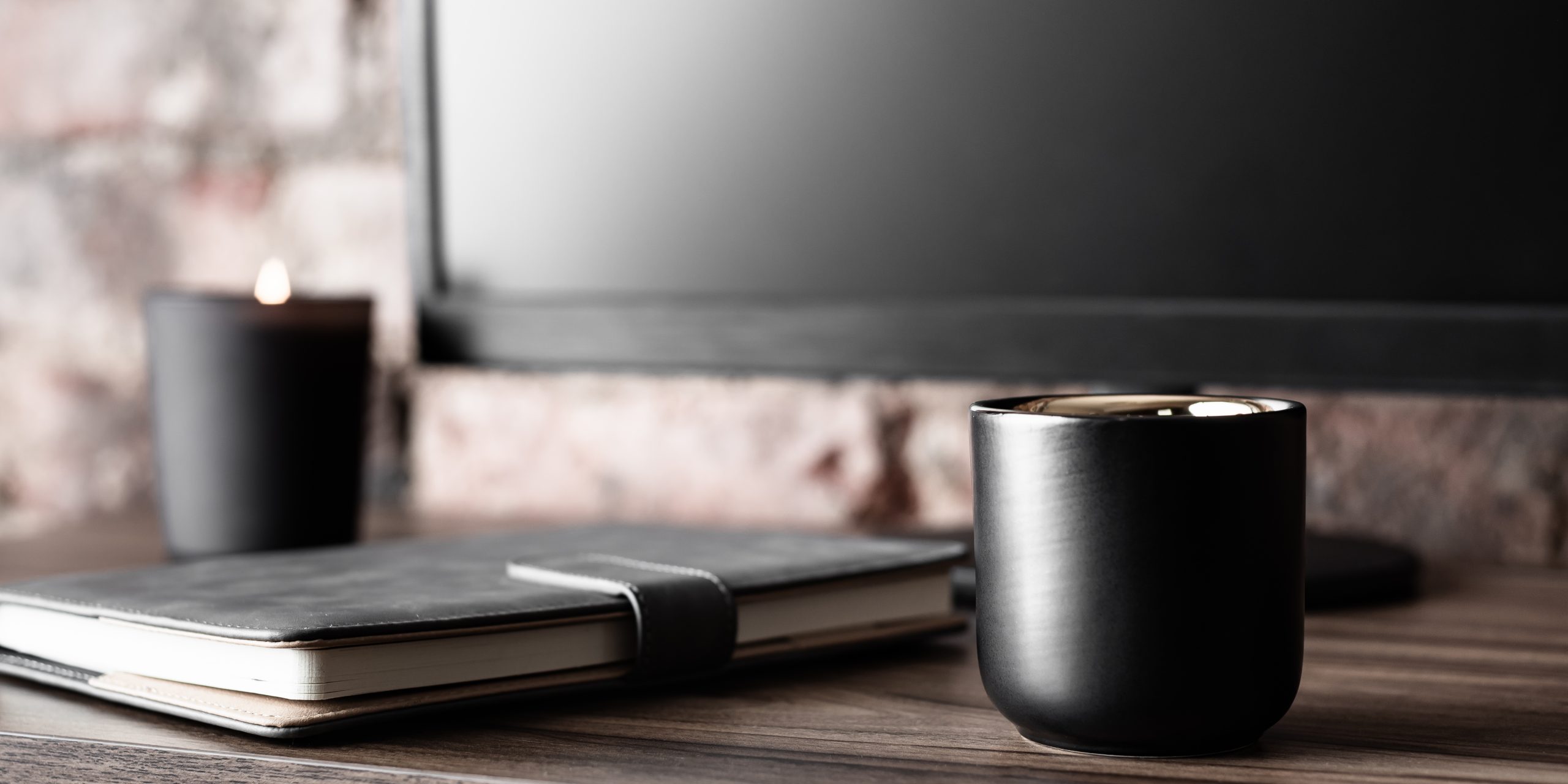
Before You Buy Another Planner: 5 Checks for Planner Peace
There’s a certain thrill when a new planner drops. The crisp covers, the promise of organization, the whispered lie that this one will change everything. You convince yourself: “Yes. This is it. This is the planner that will make me finally consistent, productive, stylish, and maybe even the type of person who remembers to water the plants.”
And then… three months later it’s collecting dust on your shelf, while you’re back to scribbling on sticky notes.
If this sounds familiar, welcome to the club. I’ve been a long-standing member, and let me tell you, the initiation fee is steep: four abandoned planners just this year alone, all of which I convinced myself were “the one.” The silver lining? Each of those planners found new life with friends or family. What wasn’t right for me turned out to be exactly right for them.
That’s what I’ve learned over years of trial and error: it’s not that the planners were bad. In fact, every single one was great. They just weren’t the right fit for me at this phase of my life.
My Planner History (or, The Graveyard Tour)
Like many of you, I’ve flirted with more systems than I can count. Some were quick flings; others were long-term relationships that ended with “it’s not you, it’s me.”
-
- Plum Paper Planner – My First Boutique Love
Customizable covers, colorful layouts, and the thrill of designing something that felt “fancier” than a big-box store planner. Plum Paper was my gateway drug into boutique planners, and I still peek at their new releases like an old flame. But as my needs grew more complex, their structured pages didn’t bend enough to fit the way I actually plan. For someone who wants polished structure with a bit of personalization, Plum Paper is still a solid first stop. - Erin Condren Planner – The Pop Culture Icon
Bold colors, coiled perfection, and endless accessories. Erin Condren was the planner community darling for a reason, and I happily hopped on that train. But eventually, I realized all that structure and flair was doing more for my Instagram feed than for my actual life. If you love vibrant layouts and thrive on weekly spreads that scream “use me,” Erin Condren might be your best match. - Hobonichi Cousin – The Daily Darling
Tomoe River paper, clean design, and all the layouts: monthly, weekly, daily. What’s not to love? For me, it turned into more of a mismatch than a miracle. The preprinted pages looked gorgeous but boxed me in, and the lack of extra note pages left me juggling scraps and inserts. What I really needed was freedom to adapt spreads to my life, not squeeze my life into their pre-set boxes. Still, for detail-oriented planners who want everything mapped out for them, Hobonichi can feel like a dream come true. - Aura Estelle Planner – Minimalist Beauty
Sleek, simple, Instagram-ready. I wanted to love it, and I did… at first. But those predated daily pages quickly turned into a trap. I felt pressured to fill every box, so I added tasks I knew I’d never do just to make it look complete. Talk about discouraging. For someone who thrives on structure and consistency, Aura Estelle delivers a clean, disciplined layout. For me, it was a reminder that sometimes an aesthetic loves Instagram more than it loves my real life. - Happy Planner – The Sticker Playground
Discs, dashboards, and enough sticker books to start a small stationery library. Happy Planner lured me in with its promise of flexibility — pop pages in, pop pages out. In reality, I found myself more obsessed with decorating than with actually planning. It became a craft project, not a productivity tool. But if you adore creative layouts and want your planner to double as a scrapbook, Happy Planner absolutely shines. - Rosey Life FLOW Planner – The Temptation
At first glance, it looked like a dream: horizontal and vertical weeklies, goal-setting galore, trackers, and detailed monthly overviews. But what started as “wow, so comprehensive” quickly became “wow, so overwhelming.” My life is busy, but not that busy — and I’m not the type to set major goals just to backfill a to-do list from them. For someone who thrives on structured goal-setting and loves the idea of an all-in-one life book, Rosey Life could absolutely be “the one.” For me, it was more like a reminder that sometimes less really is more.
- Plum Paper Planner – My First Boutique Love
Why Wonderland Works for Me (Right Now)
Enter my Wonderland222 A5 All-in-One my current constant. I call it “the beast” because it’s sprawling, flexible, and full of pages I can bend to my will. Lightweight, spacious, and built with room to breathe — Wonderland222 finally gave me the blend of structure and blank space I’d been chasing. The annual pages keep me grounded, the weeklies help with teaching schedules, and the daily spreads are there when I need them (and patient when I don’t). It isn’t perfect — no planner is — but it’s the one I’ve bent and reshaped into a system that actually works for this phase of my life.
That’s the thing: the Wonderland works because it fits this season of my life. A few years ago, I might have needed the Hobonichi’s daily detail or the Happy Planner’s creative flair. Down the road, who knows? But right now, this blueprint I’ve built keeps me grounded and consistent. I’ve recently pre-ordered my 2026 planner and promptly typed up a 5-page blueprint to set it up. If that sounds like your vibe, come see me in December as I put the blueprint into action with printed dashboards, add vellum layers, tuck in vintage ephemera, and turn it into a system that mirrors my life instead of trying to force me into someone else’s.
The Planner Pre-Order Sanity Checklist
So how do I stop myself from impulse-buying the next shiny pre-order? Honestly, it took a few too many abandoned planners (and more dollars than I care to tally) before I got smart. Now, whenever temptation hits, I run it through a sanity checklist. This one is written with my Wonderland222 in mind — because that’s the system I’m actually committed to using. But don’t worry, if Wonderland isn’t your thing, I’ve got you covered: at the end of this post you’ll find a more generic version of the checklist that works no matter what planner you’re eyeing.
-
1. Core Structure Check
-
- Does this planner offer something that my Wonderland 222 doesn’t that I’ll actually use? Or does the new planner represent $50 I could have spent on coffee.
-
2. Customization Check
-
- Can I layer vellum dashboards, washi stickers, and coffee ephemera so that it is a true reflection of me as a functional planner with a side of decorations?
-
3. Practicality Check
-
- Can I slide it into my much loved Moterm and OxKnight leather covers already on my shelf? Or am I about to justify another purchase for the sake of aesthetics?
-
4. System Check
-
- Does this solve a real-life problem for me or am I falling victim to FOMO when I see those marketing whispers on social? (Spoiler Alert: I’m still waiting for a planner to meal prep and cook for me.)
-
5. Gut Check
-
- Am I genuinely excited to use this planner beyond the first few weeks? Or am I just envisioning the flat lays on Instagram?
The Takeaway
Here’s what I know: every planner I’ve owned has been a good planner. Hobonichi, Aura Estelle, Happy Planner, Plum Paper — all of them are thoughtfully designed and perfect for the right person. They just weren’t perfect for me right now. And that’s okay. In fact, some of my best planner “failures” became wins when I passed them along to someone else. This year alone, I’ve given away four planners to friends and family — and in each case, the one that didn’t work for me turned out to be exactly right for them.
That’s the real lesson of planner peace: it’s not about finding the mythical “perfect planner.” It’s about finding the one that works for your life as it is today. And holding onto your system long enough to trust it, instead of chasing the next new thing.
Planner Audit Worksheet: Is This Planner Worth It?
Sometimes the temptation to hit “pre-order” is strong — stronger than coffee at 6 a.m. But before you invest, pause and run the planner through this quick audit. The worksheet below helps you slow down, look at your options clearly, and decide if the shiny new thing really fits your life.
Each of the five checkpoints has a 1–10 rating scale so you can see at a glance how the planner measures up:
-
1 = Absolutely not. This planner doesn’t meet the need at all.
-
5 = Neutral. It’s a “meh” — could work, could flop, not strongly good or bad.
-
10 = Absolutely yes. This planner nails it perfectly.
Use the notes section to jot down specifics (like “won’t fit my cover” or “perfect for daily logs”). Once you’ve scored all five categories, add them up for a total out of 50. Then give yourself a verdict:✅Pre-Order or ❌ Pass for Now.
Think of it as your personal planner filter — a way to separate true solutions from impulse buys disguised as productivity. Because the only thing worse than planner guilt… is a planner graveyard.
Finding planner peace isn’t about chasing every new release — it’s about finding (and protecting) the system that actually supports your life. For me, that means sticking with my Wonderland222 and running every tempting pre-order through this sanity filter before I click “buy.”
Now it’s your turn. Download the free Planner Audit Worksheet, put your next planner crush to the test, and see if it really earns a spot in your lineup.
👉 [Download the Planner Audit Worksheet here]
Because sometimes the best planner isn’t the newest one — it’s the one that finally works for you.
-
🖊️ With purpose, a planner, and a pencil behind my ear.
– Mardesia
Tag:#faithplanning, #intentionalplanning, #jwplanner, #minimalplanning, #planneraddict, #plannercommunity, #plannermindset, #plannerobsessed, #plannerpeace, #plannerprintable, #plannerproductivity, #plannerspread, #plannerworksheet, #planningresources, #planningtools, #planningwithpurpose, #withpurposeaplannerandapencil, #wonderland222


